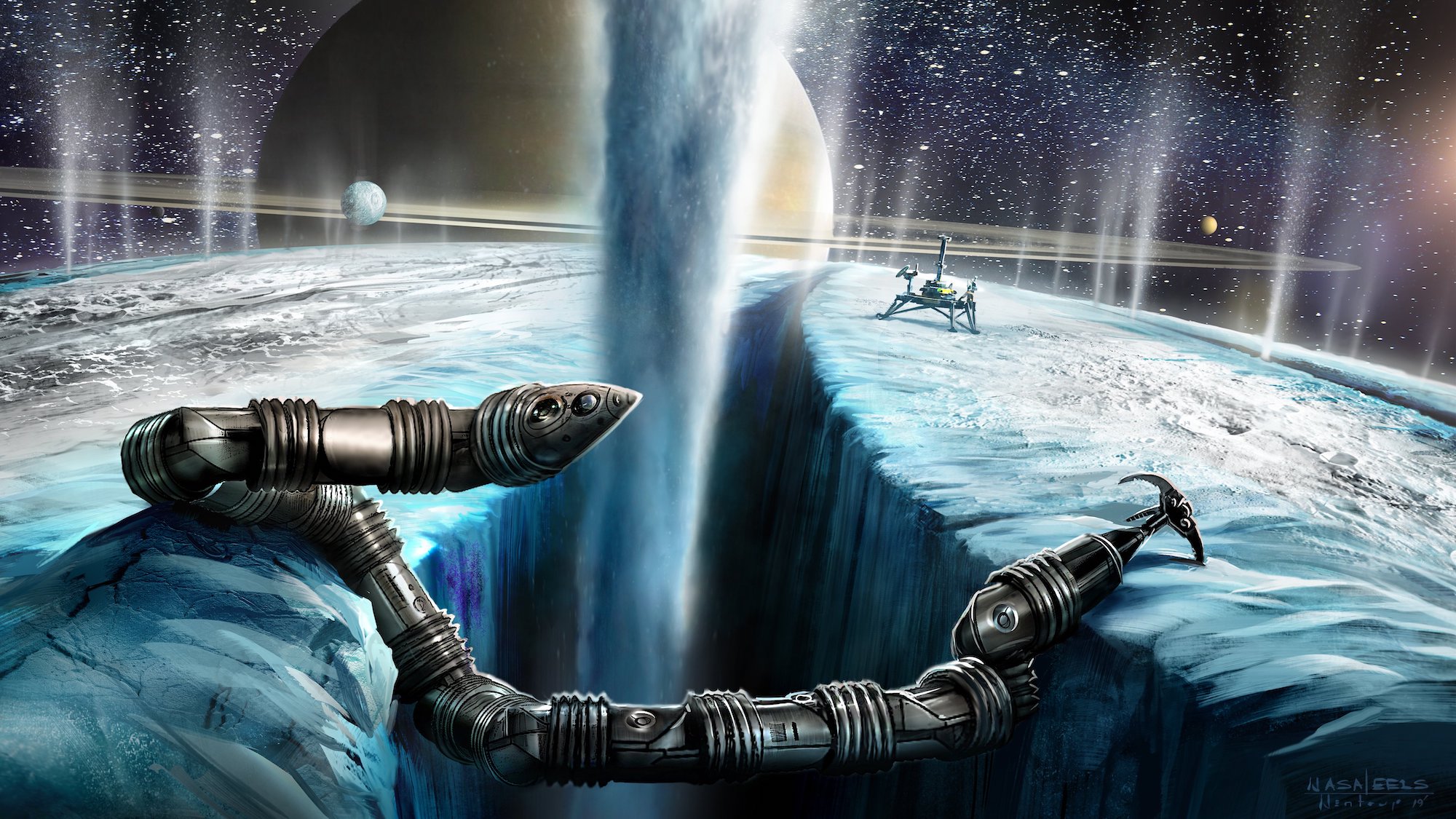

At least 83 moons orbit Saturn, and experts believe its most reflective one could harbor life underneath its icy surface. To find out, NASA scientists hope to send a massive serpentine robot to scour Enceladus, both atop its frozen ground—and maybe even within a hidden ocean underneath.
As CBS News highlighted on Monday, researchers and engineers are nearing completion of their Exobiology Extant Life Surveyor (EELS) prototype. The 16-foot-long, 200-pound snakelike bot is capable of traversing both ground and watery environments via “first-of-a-kind rotating propulsion units,” according to NASA’s Jet Propulsion Laboratory. These repeating units could act as tracks, gripping mechanisms, and underwater propellers, depending on the surrounding environment’s need. The “head” of EELS also includes 3D mapping technology alongside real-time video recording and transmission capabilities to document its extraplanetary adventure.
[Related: Saturn’s rings have been slowly heating up its atmosphere.]
In theory, EELS would traverse the surface of Enceladus towards one of the moon’s many “plume vents,” which it could then enter to use as a passageway towards its oceanic source. Over 100 of these vents were discovered at Enceladus’ southern pole by the Cassini space probe during its tenure around Saturn. Scientists have since determined the fissures emitted water vapor into space that contained amino acids, which are considered pivotal in the creation of lifeforms.

To assess its maneuverability, NASA researchers have already taken EELS out for test drives in environments such as an ice skating rink in Pasadena, CA, and even an excursion to Athabasca Glacier in Canada’s Jasper National Park. Should all go as planned, the team hopes to present a finalized concept by fall 2024. But be prepared to wait a while to see it in action on Enceladus—EELS’ journey to the mysterious moon would reportedly take roughly 12 years. Even if it never makes it there, however, the robotic prototype could prove extremely useful closer to Earth, and even on it. According to the Jet Propulsion Lab, EELS could show promise exploring the polar caps of Mars, or even ice sheet crevasses here on Earth.
[Related: Saturn has a slushy core and rings that wiggle.]
Enceladus’ fascinating environment was first unveiled thanks to NASA’s historic Cassini space probe. Launched in 1997, the satellite began transmitting data and images of the planet and its moons back to Earth after arriving following a 7 year voyage. After 13 years of service, a decommissioned Cassini descended towards Saturn, where it was vaporized within the upper atmosphere’s high pressure and temperature. Although NASA could have left Cassini to cruise sans trajectory once its fuel ran out, they opted for the controlled demolition due to the slim possibility of crashing into Enceladus or Titan, which might have disrupted the potential life ecosystems scientists hope to one day discover.
